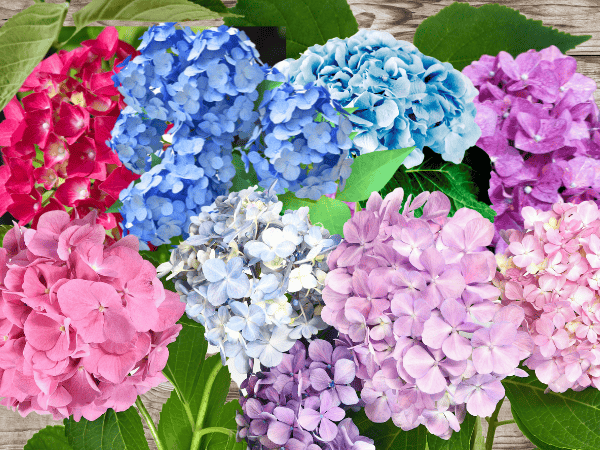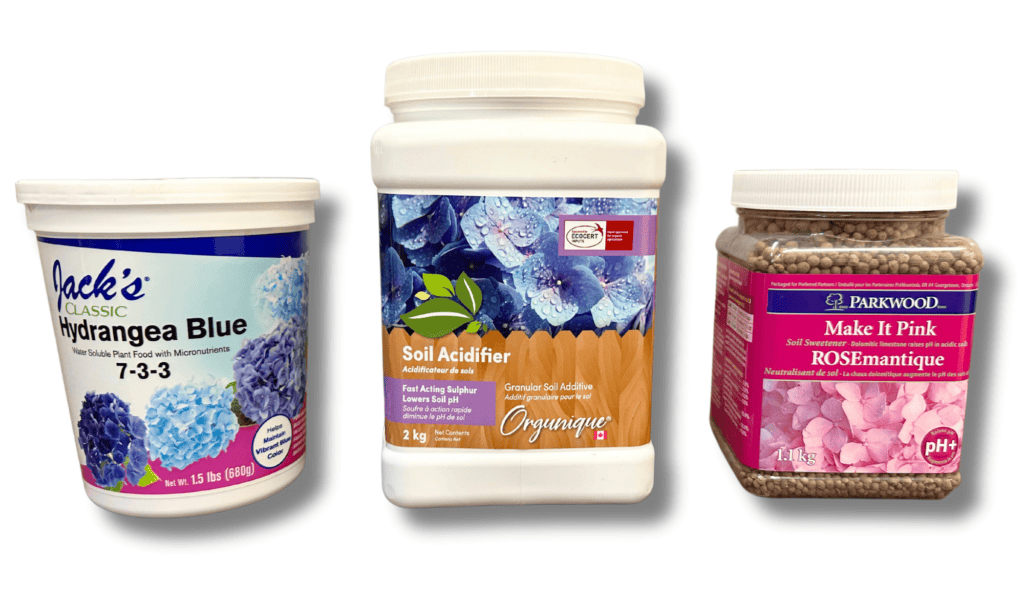
How to Modify Hydrangea Colours
Hydrangeas are renowned for their stunning blooms and their ability to add a touch of elegance to any garden. What many people may not realize is that these beautiful flowers can undergo a colour transformation, providing a fascinating opportunity to customize your garden’s palette. In this article, we will explore the factors that influence hydrangea colours and share techniques to change their hues to suit your preferences.
Understanding Hydrangea Colour Variations
The colour of hydrangea blooms is primarily influenced by the pH level of the soil in which they grow. This pH-dependent colour change is most noticeable in certain hydrangea species, such as Hydrangea macrophylla (bigleaf hydrangea), which includes both mophead and lacecap varieties. However, it’s important to note that not all hydrangeas can have their bloom colour changed through soil amendments.
Paniculate hydrangeas, known for their cone-shaped blooms and smooth types (such as Annabelle and other aborescens varieties), do not typically respond to soil amendments to alter their colour. Instead, these hydrangeas naturally change colour as part of their life cycle, transitioning in the fall to beautiful shades of pink, red, or even tan. While you may not be able to change the colour of paniculate hydrangeas through soil amenities, you can still enjoy their natural colour changes during the autumn season.
By understanding the specific characteristics of different hydrangea varieties, you can make informed decisions about the potential for colour change and appreciate the unique beauty each type of hydrangea offers.
Blue and Purple Hydrangeas
Blue and purple hydrangea blooms appear in acidic soil conditions, with a pH range of around 4.5 to 5.5. This low pH enables the plants to absorb aluminum from the soil. The presence of aluminum ions creates a chemical reaction within the petals, resulting in blue or purple colouration.
Pink and Red Hydrangeas
In contrast, pink and red hydrangea blooms are prominent in alkaline soil, with a pH range of approximately 6.0 to 6.2 or higher. In alkaline conditions, aluminum becomes less available for the plant to absorb, leading to a pink or red hue. The higher the pH, the more intense the pink or red colouration.
Techniques to Alter Hydrangea Colours
Now that we understand the connection between soil pH and hydrangea colours let’s explore some techniques to change the colour of your hydrangea blooms.
Adjusting Soil pH
To transform blue hydrangeas into pink ones, or vice versa, modifying the soil pH is key. For blue hydrangeas, lower the soil pH by adding amendments such as aluminum sulphate or sulphur. This can be done by carefully following the instructions provided by the product and monitoring the pH levels regularly. For pink hydrangeas, raise the soil pH by adding lime or other alkaline substances. Remember, altering the soil pH takes time, and it may require a few seasons to achieve the desired colour change.
Container Cultivation
If you have limited control over the soil in your garden, growing hydrangeas in containers can be an effective solution. This allows you to create a specific soil environment tailored to your desired hydrangea colour. Use an appropriate potting mix and adjust the pH accordingly to achieve the desired blue or pink blooms.
*Disclaimer: The Canadale guarantee does not cover hydrangeas planted in containers. It is important to take extra precautions when cultivating perennials, shrubs, or trees in containers to safeguard their root systems from winter freeze. To ensure the thriving growth of your plants, we highly recommend opting for direct planting into the ground.
Colour-Enhancing Products
In addition to adjusting the soil pH, there are colour-enhancing products available in the market that can help intensify or modify hydrangea colours. These products contain additives that supply or restrict aluminum availability in the soil, thus influencing the bloom colour. Follow the instructions on the product packaging carefully to achieve the desired results.

Maintenance and Care
To ensure the health and vitality of your hydrangeas, regardless of their colour, proper care is essential. Here are some general maintenance tips:
- Provide adequate sunlight: Hydrangeas generally prefer full sun, although the specific light requirements can vary based on the species and cultivar. Consult specific care guidelines for your hydrangea variety.
- Water consistently: Hydrangeas appreciate regular watering, especially during dry spells. Keep the soil consistently moist, but avoid overwatering, as it can lead to root rot.
- Pruning: Prune hydrangeas during the appropriate time of year according to their specific blooming habits. This encourages healthy growth and abundant blooms.
To learn more about pruning hydrangeas, click here.
Changing the colours of your hydrangeas can be a captivating and rewarding endeavour, allowing you to personalize your garden’s aesthetic. By understanding the pH-dependent nature of hydrangea colours and implementing techniques such as adjusting soil pH, container cultivation, or using colour-enhancing products, you can transform the hues of these enchanting flowers to suit your preferences. Remember to provide proper care and maintenance to ensure your hydrangeas thrive, regardless of their colour, and enjoy the beauty they bring to your garden.

